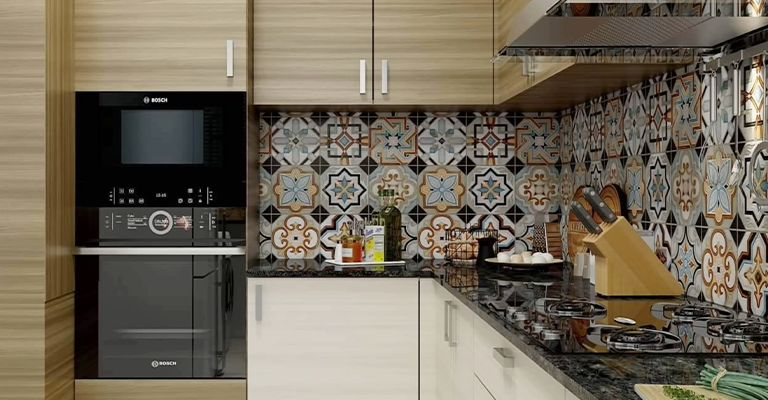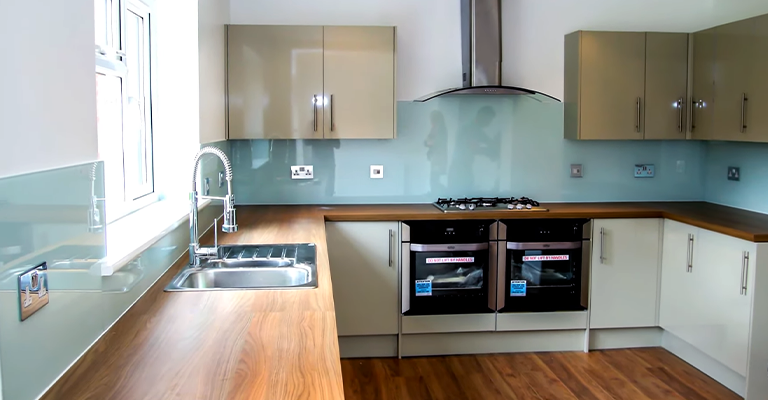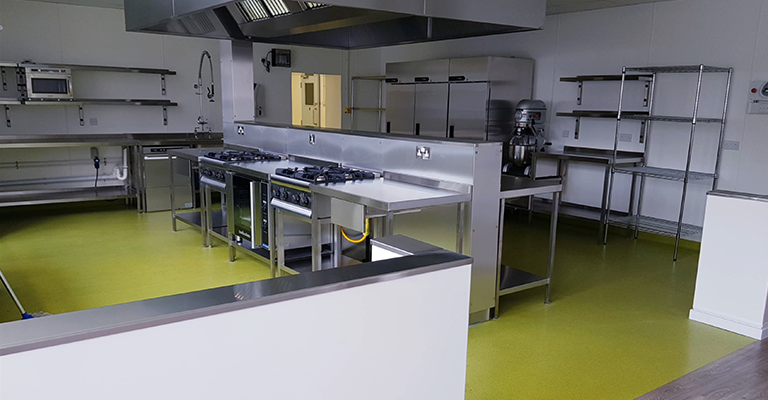What Is A Floating Kitchen?-Revolutionizing Kitchen Design
A floating kitchen, a versatile and dynamic addition to modern homes, transcends the confines of conventional kitchen design. Unlike fixed cabinetry, it is a freestanding unit with wheels or casters, allowing easy mobility within the kitchen space.
This innovative concept offers a fusion of functionality and style, providing extra workspace for culinary endeavors while doubling as a social hub. With integrated features like sinks, stove tops, and storage, it adapts seamlessly to various kitchen activities.
Its ability to be customized in design and materials ensures a tailored fit for any space. This introduction delves into the distinct attributes and benefits that define a floating kitchen

What Is A Floating Kitchen?
A floating kitchen, also known as a floating island kitchen or kitchen island, is a versatile and functional piece of furniture designed for culinary preparation and often used for informal dining or socializing.
Unlike traditional fixed kitchen counters and cabinets, a floating kitchen is freestanding and can be moved around the kitchen space.
Here are some key characteristics and features of a floating kitchen:
Mobility
The mobility of a floating kitchen is facilitated by wheels or casters attached to its base, allowing it to be easily moved around the kitchen. For example, it can be positioned near a window for better natural light during meal prep or moved aside to create more floor space when needed.
Multi-functional Design
In addition to its countertop, a floating kitchen may include a range of integrated features. These could encompass a sink with running water, a stove top or hotplate for cooking, and even a small refrigerator or freezer compartment.
This amalgamation of functions enables the floating kitchen to serve as a self-contained cooking and dining unit.
Additional Storage
The storage options within a floating kitchen are meticulously designed to maximize efficiency. From drawers with custom inserts for cutlery to shelves for storing pots and pans, every nook and cranny is utilized.
Some models may also incorporate built-in wine racks, spice organizers, or hooks for hanging kitchen utensils, providing a designated place for every culinary tool.
Aesthetic Appeal
Floating kitchens are available in a diverse array of designs and finishes to accommodate various design preferences.
For instance, a minimalist kitchen island with clean lines and a monochromatic palette might complement a modern kitchen, while a reclaimed wood or butcher block-topped island could lend a rustic or industrial charm.
Social Interaction
The incorporation of seating around a floating kitchen transforms it into a gathering spot.
Whether in the form of bar stools along one side or a dining extension at one end, this feature invites family and guests to join in the culinary process.
It fosters a convivial atmosphere, allowing the cook to engage in conversation while cooking.
Space Optimization
In kitchens where counter space is at a premium, a floating kitchen proves invaluable. It provides an extra surface for meal preparation, making it easier to multitask or accommodate multiple cooks in the kitchen.
Additionally, the storage components help keep the kitchen organized and free of clutter, enhancing both functionality and visual appeal.
Easy Cleaning:
The mobility of a floating kitchen facilitates thorough cleaning. By moving the unit, it’s possible to access and clean the floor beneath, eliminating dust and debris that may accumulate over time.
This contributes to a hygienic kitchen environment and simplifies regular maintenance.
Customization
Manufacturers often offer a range of customization options for floating kitchens. Homeowners can select the dimensions, materials, and features that align with their specific needs and preferences.
This tailored approach ensures that the floating kitchen seamlessly integrates into the existing kitchen layout and fulfills the unique requirements of the household.
Design Concepts of a Floating Kitchen
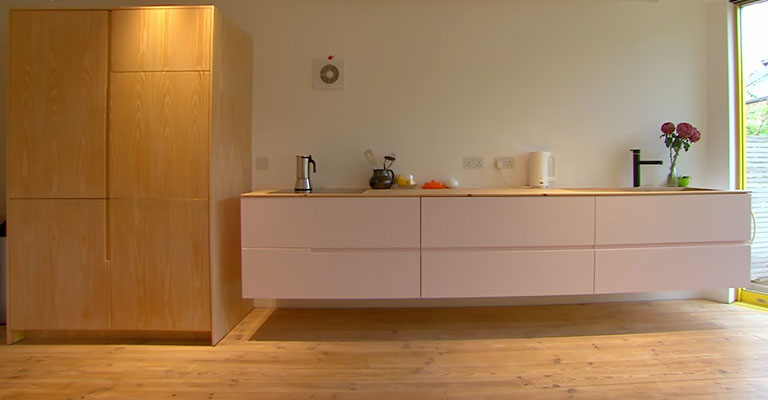
Designing a floating kitchen involves carefully considering various elements to create a functional, aesthetically pleasing, and versatile space.
Here are some key design concepts for a floating kitchen:
Open Shelving and Storage
Utilize open shelving to display decorative items and frequently used kitchenware. This adds visual interest and keeps essentials within easy reach.
Combine this with concealed storage options like drawers and cabinets to maintain a clean and organized look.
Integrated Appliances
To maximize efficiency, consider integrating appliances like a stovetop, oven, or dishwasher into the floating kitchen. This creates a seamless and streamlined appearance while optimizing the use of space.
Material Selection
Choose materials that not only align with your aesthetic preferences but also complement the overall design of your kitchen.
For example, sleek quartz or granite countertops can exude a modern feel, while butcher block or reclaimed wood can evoke a more rustic ambiance.
Seating Arrangements
When your floating kitchen includes seating, consider the layout and placement carefully.
Bar stools along one side create an informal dining experience, while a built-in dining extension provides a more traditional dining setup.
Lighting
Incorporate appropriate lighting to enhance both functionality and ambiance.
Pendant lights above the floating kitchen can serve as task lighting for food preparation, while under-cabinet lighting can illuminate work surfaces.
Color Palette
Select a color scheme that harmonizes with the overall design of your kitchen.
Neutral tones can create a timeless and versatile backdrop, while pops of color or contrasting elements can add visual interest.
Multi-level Surfaces
Consider incorporating different levels on your floating kitchen. This could include a raised section for a breakfast bar or a lowered section for specific food prep tasks. These variations in height add depth and functionality to the design.
Texture and Contrast
Introduce texture through materials like stone, wood, or metal. Contrasting textures can create visual interest and add depth to the design.
For example, pairing a smooth countertop with rough-hewn wood accents can create a dynamic visual contrast.
Incorporate Natural Elements
Bring nature indoors by incorporating elements like indoor plants or natural wood finishes. This not only adds a touch of freshness but also creates a warm and inviting atmosphere.
Functional Zones
Define specific zones within the floating kitchen for different activities. For instance, designate an area for food prep, cooking, and dining. This helps to create a logical flow and organization within the space.
Flexibility and Mobility
Ensure that the floating kitchen is designed with mobility in mind. Wheels or casters should be sturdy and well-suited to the flooring to allow for easy movement.
Personal Touches
Infuse your personality into the design through personal touches like artwork, decorative accessories, or even customized hardware. These details can make the space feel uniquely yours.
Space-Saving Advantages of Floating Kitchens in Compact Settings
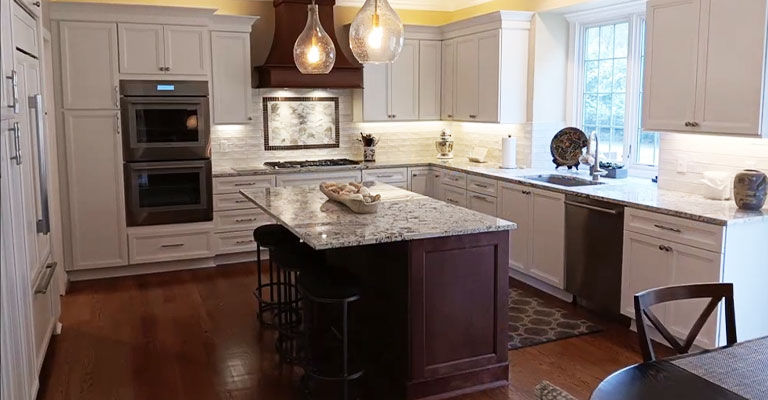
Floating kitchens are exceptionally well-suited for small spaces due to their versatile design and mobility.
Here are the specific ways in which they excel in compact settings:
Optimized Layout
In small kitchens, every inch counts. Floating kitchens provide an additional work surface without the need for fixed countertops and cabinets, making efficient use of limited space.
Mobility for Flexibility
The ability to move a floating kitchen allows for dynamic rearrangement.
This adaptability ensures that the kitchen can be positioned optimally for cooking, dining, or socializing, and can even be relocated entirely if needed.
Integrated Storage Solutions
Floating kitchens often incorporate smart storage features, including drawers, shelves, and cabinets.
These elements contribute to a clutter-free environment, essential for maintaining a sense of spaciousness in a small kitchen.
Multi-Functional Design
Floating kitchens frequently combine various functions into one unit. For instance, they may include a sink, stove, or even a dining extension. This multi-functionality maximizes the utility of the kitchen island in a compact setting.
Visual Lightness
Unlike traditional fixed cabinetry, floating kitchens create a sense of openness by leaving the floor space underneath visible. This visual lightness gives the impression of a larger, airier room.
Streamlined Aesthetic
The clean lines and unobtrusive design of floating kitchens can make a small kitchen appear less cluttered and more organized. This streamlined aesthetic contributes to a sense of spaciousness.
Clear Floor Space
By being able to move the kitchen island aside when not in use, you can free up valuable floor space. This is especially advantageous in small kitchens where maneuverability is limited.
Enhanced Social Interaction
In compact spaces, having a floating kitchen with integrated seating allows for a more intimate dining experience. It brings people closer together, making the most of the available space.
Customizable Dimensions
Manufacturers often offer customization options, allowing you to choose a floating kitchen that perfectly fits your small kitchen’s dimensions. This ensures a seamless integration into the existing layout.
Task-Oriented Lighting
The mobility of a floating kitchen allows for strategic placement of task lighting.
This ensures that the workspace is well-illuminated, making it easier to work efficiently in a smaller area.
Cleanability and Maintenance
Floating kitchens make it easier to clean the floor underneath, which can be challenging with fixed cabinetry. This contributes to a cleaner, more hygienic kitchen environment.
Multi-Level Surfaces
Some floating kitchens offer different levels for various activities. This can include a raised section for bar-style seating or a lowered section for specific food prep tasks.
These variations in height add depth and functionality to the design.
Contrasting Features of Floating Kitchens and Traditional Kitchens

Floating kitchens and traditional kitchens each possess distinct characteristics that set them apart in terms of design, functionality, and overall aesthetic.
Here are the key differences between the two:
Mobility
- Floating Kitchen: Designed with wheels or casters, a floating kitchen is movable and can be repositioned within the kitchen space.
- Traditional Kitchen: Fixed in place, a traditional kitchen is immobile and its layout is typically more permanent. Changes to the arrangement require renovation or remodeling.
Work Surface
- Floating Kitchen: Offers additional work surface, often in the form of a countertop or island. This extra space is particularly useful for meal preparation, baking, or other culinary tasks.
- Traditional Kitchen: Work surfaces are typically limited to fixed countertops and may not provide as much flexibility in terms of layout and usage.
Storage Solutions
- Floating Kitchen: Often includes integrated storage features like drawers, shelves, and cabinets. These are designed to maximize space and organization.
- Traditional Kitchen: Relies on fixed cabinetry for storage. While effective, the options for customization and organization may be more limited compared to floating kitchens.
Aesthetic and Design
- Floating Kitchen: Exhibits a modern, sleek, and often minimalist design. It can be a focal point of the kitchen and is available in a wide range of styles, materials, and finishes.
- Traditional Kitchen: Tends to have a classic, enduring look with elements like wood cabinetry and ornate details. It may follow a more timeless and established design scheme.
Social Interaction
- Floating Kitchen: Often designed to facilitate social interaction, with options for seating integrated into the unit.
- Traditional Kitchen: While socialization is still possible, the layout may not be as conducive to direct interaction with those outside of the cooking area.
Flexibility in Layout
- Floating Kitchen: Can be easily moved or relocated, offering flexibility in kitchen arrangement and usage. This adaptability is particularly beneficial in homes with changing needs.
- Traditional Kitchen: Layout changes require more extensive renovations, making it less adaptable to evolving lifestyle preferences.
Visual Impact
- Floating Kitchen: Creates a visual focal point in the kitchen, often contributing to a more modern and open feel. It can add a contemporary touch to the overall aesthetic.
- Traditional Kitchen: Conveys a timeless and enduring aesthetic, often characterized by warm, familiar elements that evoke a sense of comfort.
Floor Space and Cleaning
- Floating Kitchen: Leaves the floor space underneath visible, contributing to a more open and spacious feel. It can be moved for easier cleaning of the floor beneath.
- Traditional Kitchen: Typically covers the entire floor space, potentially making it more challenging to clean the area underneath.
Practical Implementation Tips and Ideas
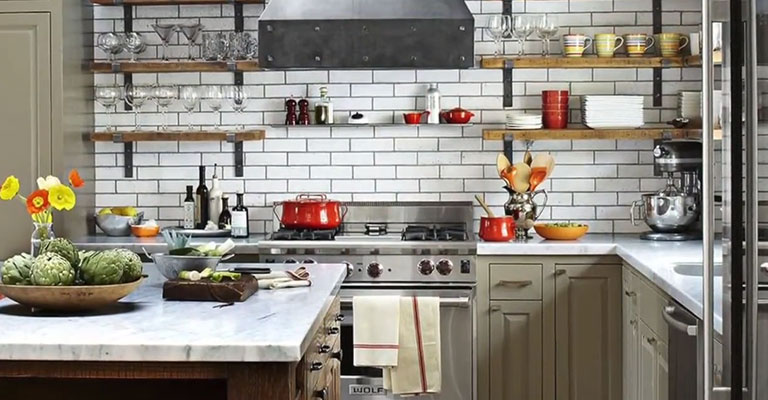
Floating kitchens, with their mobility and multifunctional design, are revolutionizing modern kitchen spaces. Implementing this concept effectively requires thoughtful planning and strategic execution.
Here are practical tips and creative ideas to guide you through the process:
Consider Your Kitchen Layout
Before implementing a floating kitchen, carefully assess your kitchen layout.
Determine the optimal location for the island, ensuring that it doesn’t obstruct the flow of traffic and is positioned near essential kitchen utilities like water sources and electrical outlets.
Mobility and Stability
Ensure that the wheels or casters used for mobility are of high quality and have secure locks.
This guarantees stability when working on the floating kitchen and prevents unintentional movement.
Storage Optimization
Make the most of the integrated storage features in your floating kitchen.
Use dividers, drawer organizers, and pull-out racks to keep utensils, pots, pans, and other kitchen essentials well-organized.
Lighting Considerations
Install appropriate lighting fixtures above or around the floating kitchen to provide sufficient task lighting for food preparation. Pendant lights and under-cabinet lighting work well for this purpose.
Seating Arrangements
When your floating kitchen includes seating, ensure that it is comfortable and proportionate to the island’s height.
Consider bar stools or chairs that complement the island’s style and provide a cohesive look.
Customization
Take advantage of customization options to create a floating kitchen that suits your specific needs and design preferences.
Tailor the dimensions, materials, and features to seamlessly integrate into your kitchen space.
Multi-Functional Design
Maximize the multi-functionality of the floating kitchen. Consider designs that incorporate a sink, stove top, or additional storage to make it a versatile workstation.
Aesthetic Harmony
Choose materials and finishes that harmonize with your kitchen’s overall design.
Ensure that the floating kitchen complements the existing decor, whether it’s a modern, traditional, or eclectic style.
Adaptable Layout
Leverage the mobility of the floating kitchen to adapt your kitchen layout to different needs. For instance, position it for meal preparation during cooking and then move it to serve as a buffet table during gatherings.
Regular Maintenance
Keep the wheels or casters clean and lubricated to ensure smooth movement. Also, periodically check for any loose parts or wobbling to maintain stability.
Personalization
Infuse your personal style into the floating kitchen by adding decorative elements, such as colorful dishware, plants, or unique hardware.
These personal touches can make the unit feel more like an integrated part of your kitchen.
Organization Tools
Utilize the storage within the floating kitchen to keep your kitchen well-organized.
Use labeled containers, baskets, and drawer dividers to ensure that everything has its place.
Utilize the Open Shelf
When your floating kitchen includes open shelving, use it to display decorative items, cookbooks, or frequently used kitchenware. This adds a touch of personality to your kitchen.
FAQs
What is a floating kitchen?
A floating kitchen is a freestanding piece of furniture designed for culinary preparation and often used for informal dining or socializing.
Can a floating kitchen be relocated within the kitchen space?
Yes, a floating kitchen is designed with mobility in mind. It is equipped with wheels or casters that allow it to be easily moved to different locations within the kitchen.
What features does a floating kitchen typically include?
A floating kitchen generally includes a countertop for food preparation and may incorporate features like a sink, stove, or additional storage. Some designs also offer integrated seating options.
Is a floating kitchen suitable for small spaces?
Yes, floating kitchens are particularly suitable for small kitchens. Their mobility, integrated storage solutions, and adaptable design make them a space-saving and functional addition to compact settings.
What are the benefits of a floating kitchen compared to a traditional kitchen?
Compared to a traditional kitchen, a floating kitchen offers benefits such as increased work surface, improved organization, enhanced social interaction, and flexibility in layout due to its mobility.
To Recap
A floating kitchen is a versatile and mobile culinary workspace that offers a host of advantages for modern living. Its key features, such as mobility, integrated storage, multi-functionality, and the ability to enhance social interaction, make it a valuable addition to any kitchen.
Whether in a compact urban apartment or a spacious suburban home, a floating kitchen adapts to various layouts and accommodates changing needs.
Its customizable design, aesthetic appeal, and ability to create efficient, organized spaces further underline its significance in contemporary kitchen design.
The fusion of form and function in a floating kitchen enriches the culinary experience, transforming kitchens into dynamic and inviting hubs for both cooking and socializing.
